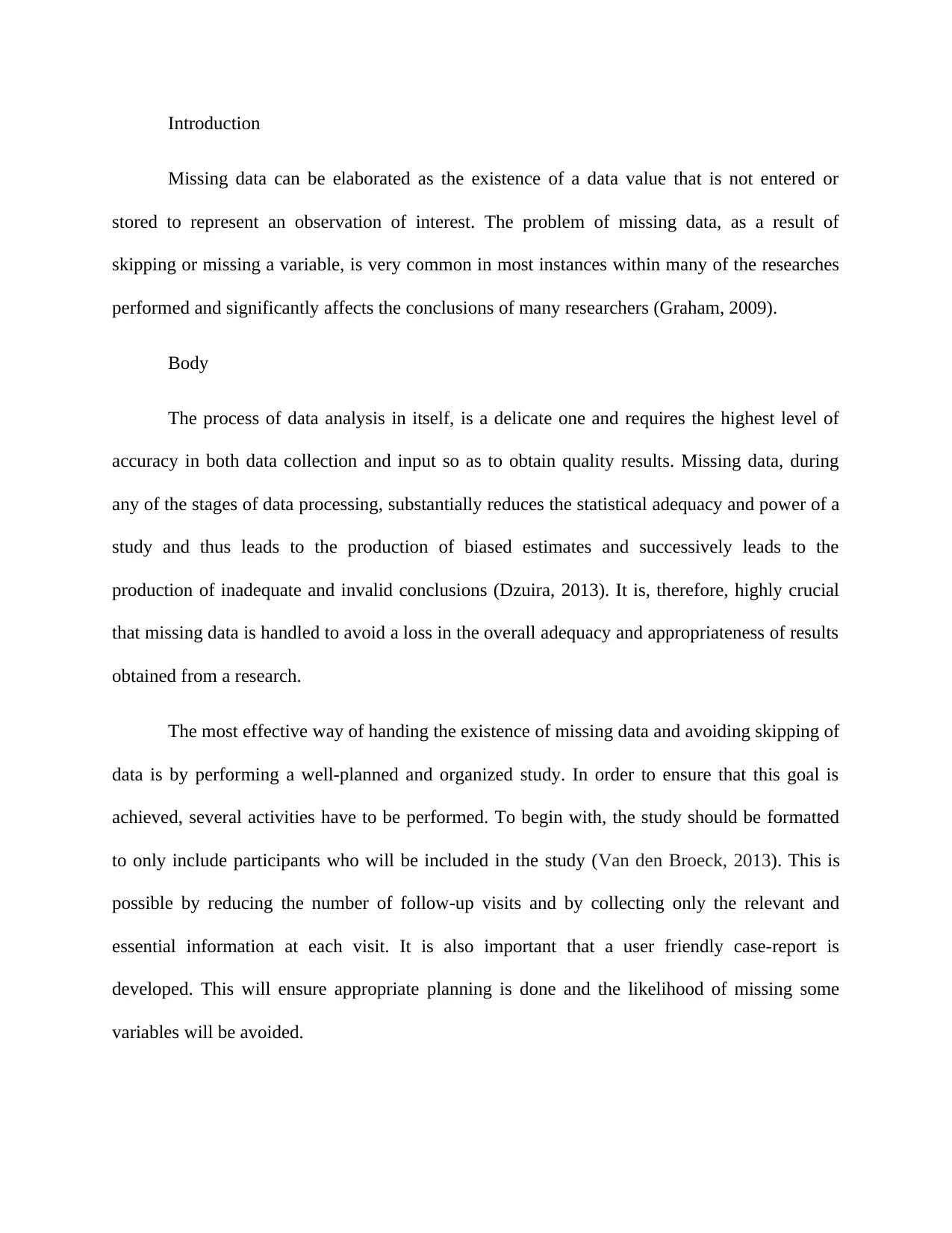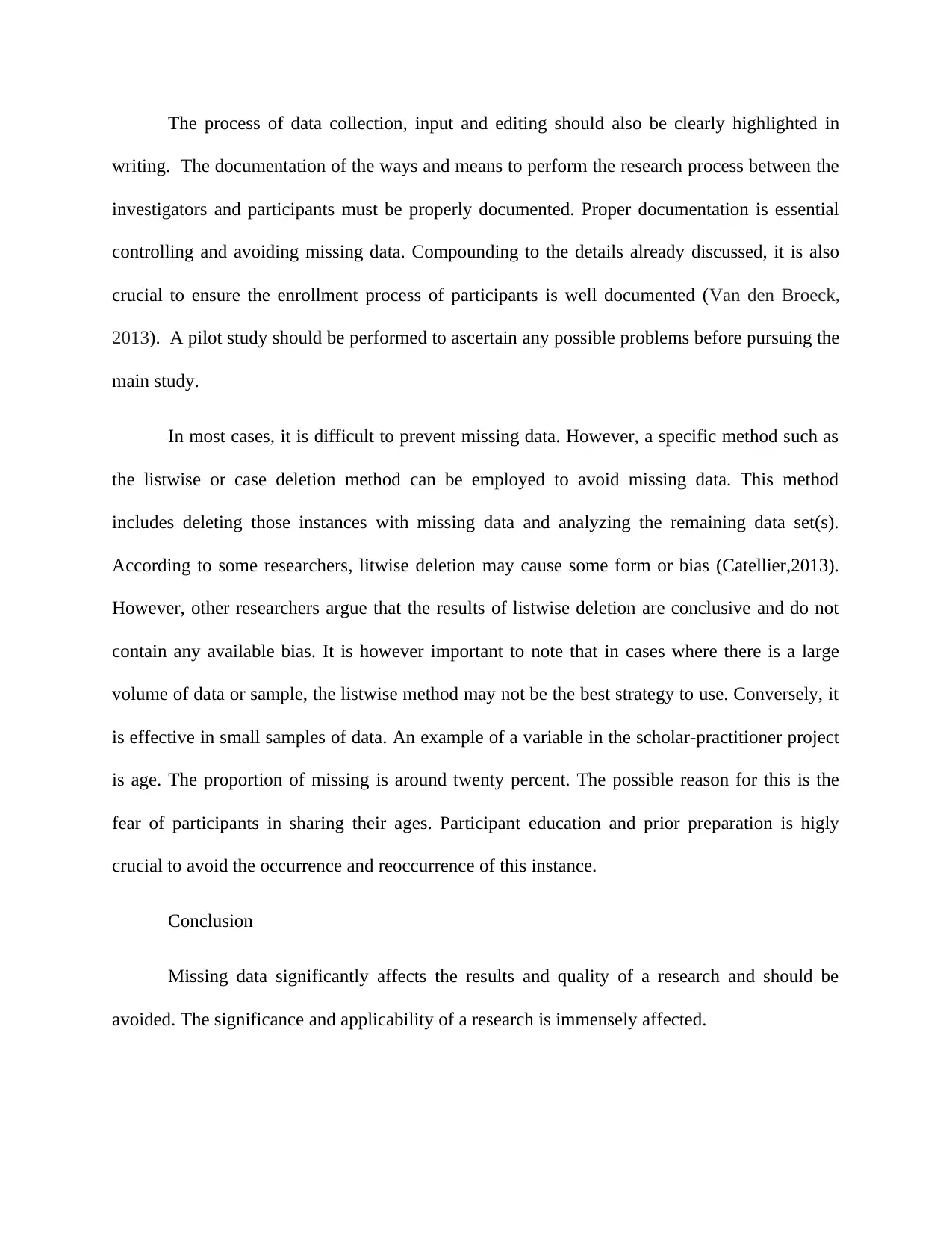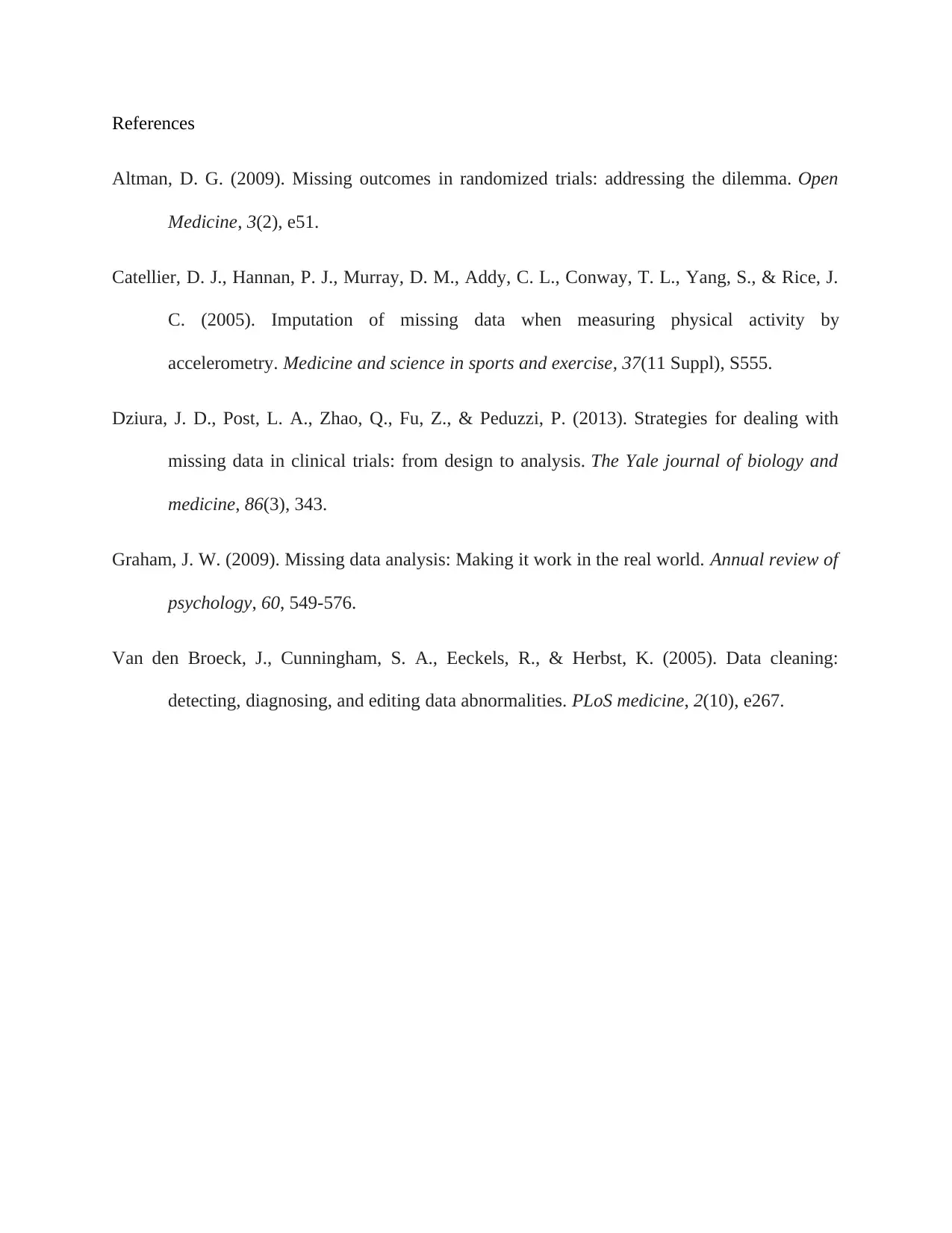PUBH 8545 Discussion: Techniques for Handling Missing Data Analysis
VerifiedAdded on 2023/06/14
|4
|844
|111
Discussion Board Post
AI Summary
This discussion post addresses the critical issue of missing data in the context of public health data analysis, specifically within the PUBH 8545 course. It highlights the importance of properly handling missing data and skipping patterns to avoid compromising the validity and statistical power of research findings. The post explores techniques for addressing missing data, such as listwise deletion, while acknowledging potential biases. It also emphasizes the significance of well-planned study designs, user-friendly case reports, and thorough documentation to minimize missing data occurrences. The discussion also touches on a variable from the scholar-practitioner project, age, and potential reasons for missing data related to it, suggesting participant education and preparation as crucial elements. The overall conclusion underscores the necessity of preventing and appropriately managing missing data to ensure the reliability and applicability of research outcomes.
1 out of 4











![[object Object]](/_next/static/media/star-bottom.7253800d.svg)